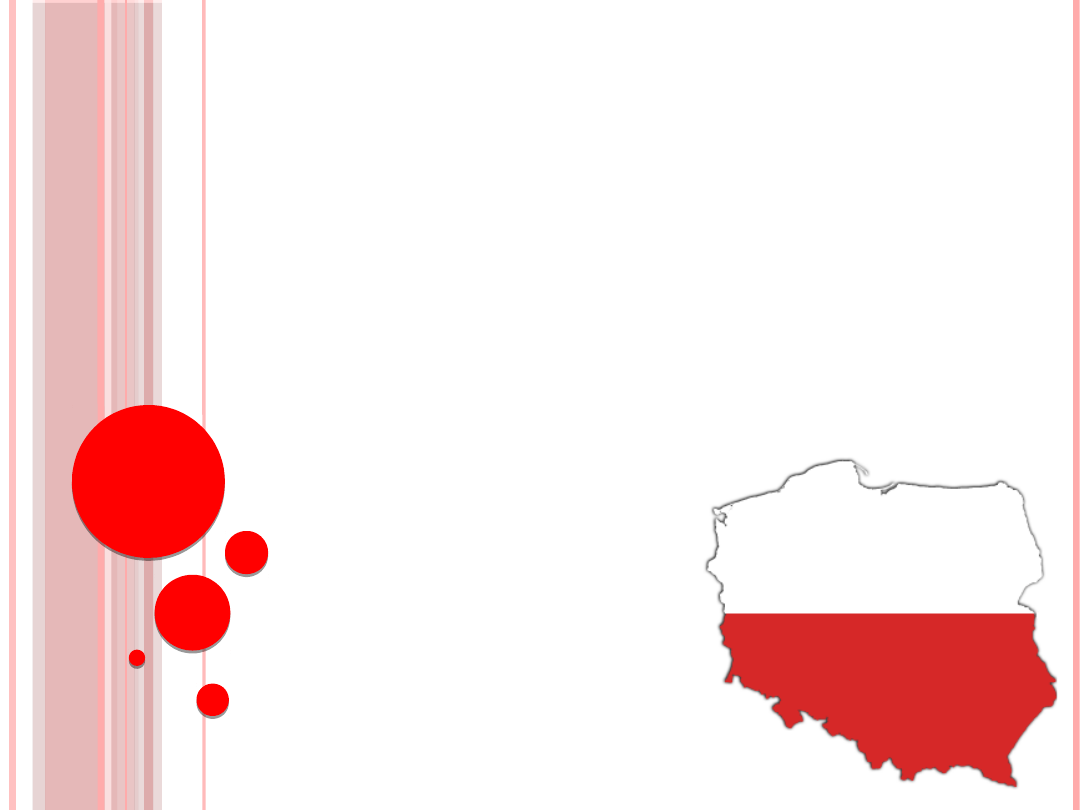
WHAT IS THE
SYMBOLE OF
POLAND
WHAT IS THE
SYMBOLE OF
POLAND
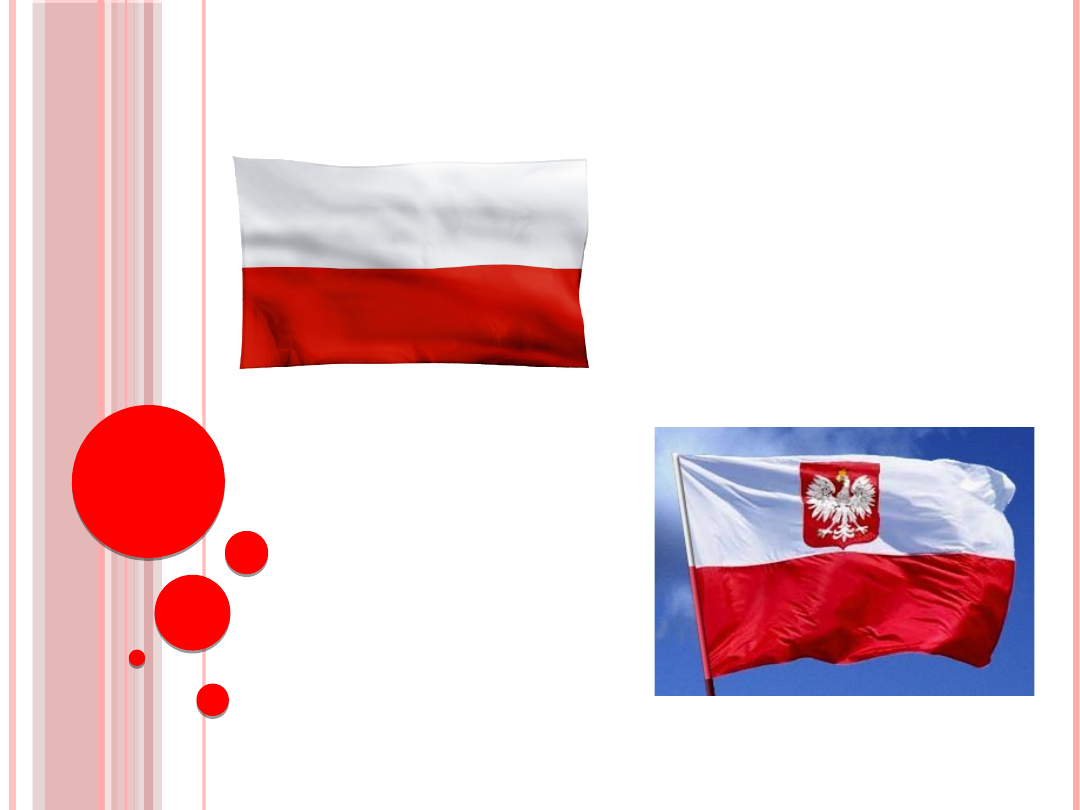
The first one from 1955 is
called the "flag state ".
Polish flag colors are white
and red, arranged in two
horizontal parallel stripes,
the top is white and the
lower red.
In Poland there are two types of
flags:
In addition to the above
described white-red
flag, there is also the
emblem of the Polish
flag with a white
rectangle called a "flag
with the emblem of the
state."
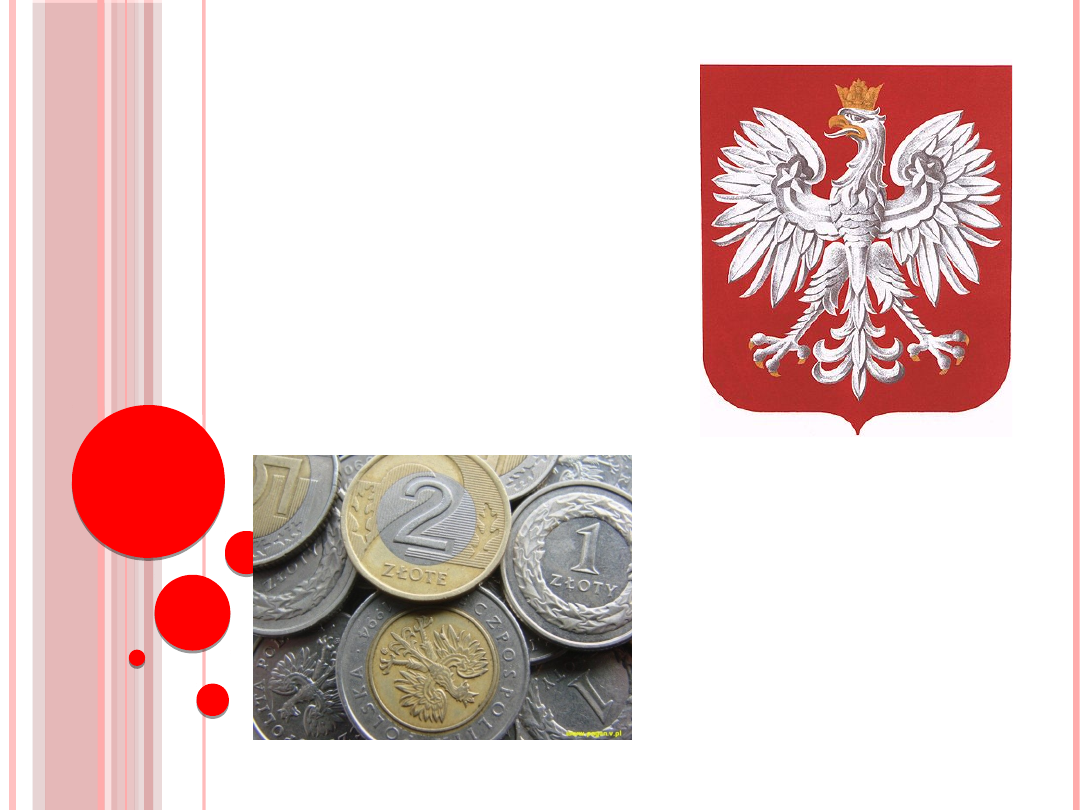
Emblem of the Polish white
eagle with a golden crown,
with golden claws and beak,
turned right on a red
background, slightly
tapering toward the bottom
shield.
Coat of arms of Polish :
Today, it is protected by a
symbol of the Polish state.
His image appears on
government buildings. It is
also present in schools and
courts. It is also
represented in the Polish
coins, as well as the Polish
National Team shirts in
many sports.
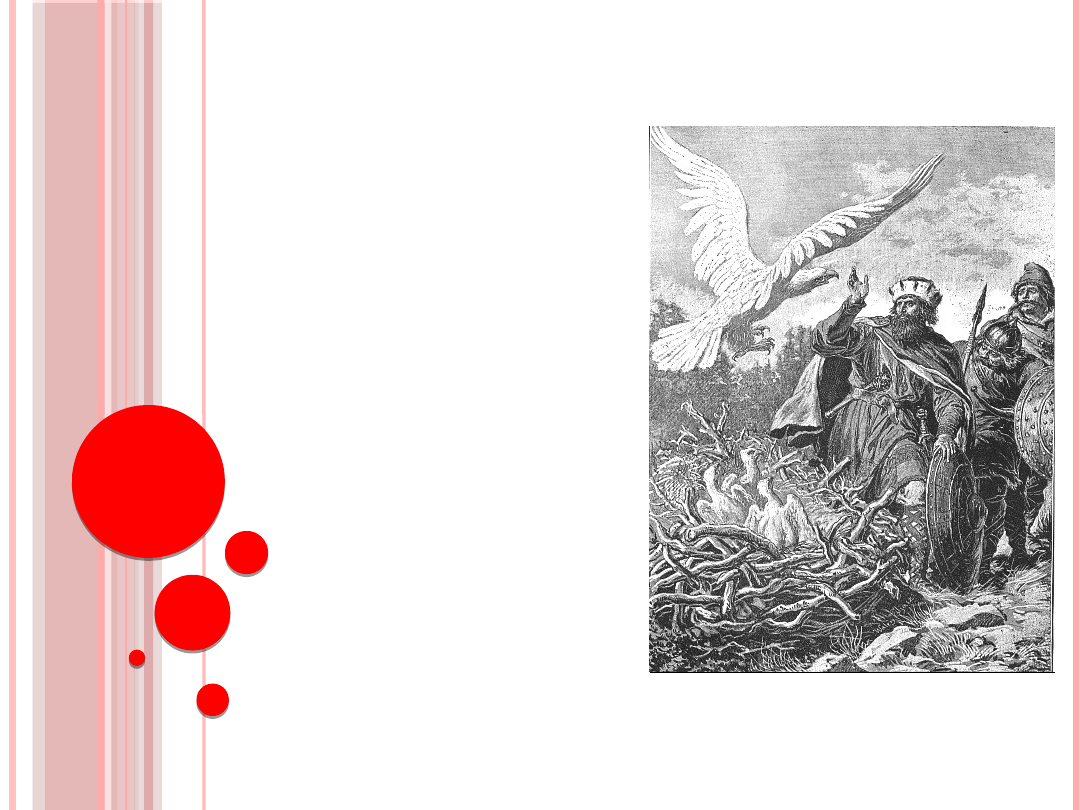
According to legend, the
founder of the State
Polan, Lech, while
staying near Poznan in
the evening saw sizable
nest in a tree. It was a
white eagle with two
chicks. When Lech looked
at him, stretched out the
wings of an eagle against
a red sky of sunset. Lech
is impressed, he decided
to settle there and put
the eagle in their coat of
arms.
The legend of the creation of a Polish
emblem:

Polish National Anthem :
Polish national anthem is „Mazurek
Dąbrowskiego” written by Józef Wybicki on 16-
19 July 1797 year.
Jeszcze Polska nie zginęła,
Kiedy my żyjemy.
Co nam obca przemoc
wzięła,
Szablą odbierzemy.
Marsz, marsz Dąbrowski,
Z ziemi włoskiej do Polski.
Za twoim przewodem
Złączym się z narodem.
Przejdziem Wisłę,
przejdziem Wartę,
Będziem Polakami.
Dał nam przykład
Bonaparte,
Jak zwyciężać mamy.
Marsz, marsz...
Jak Czarniecki do
Poznania
Po szwedzkim
zaborze,
Dla ojczyzny
ratowania
Wrócim się przez
morze.
Marsz, marsz...
Już tam ojciec do swej
Basi
Mówi zapłakany —
Słuchaj jeno, pono
nasi
Biją w tarabany.
Marsz, marsz...
Liste
n:
current text :
(click)
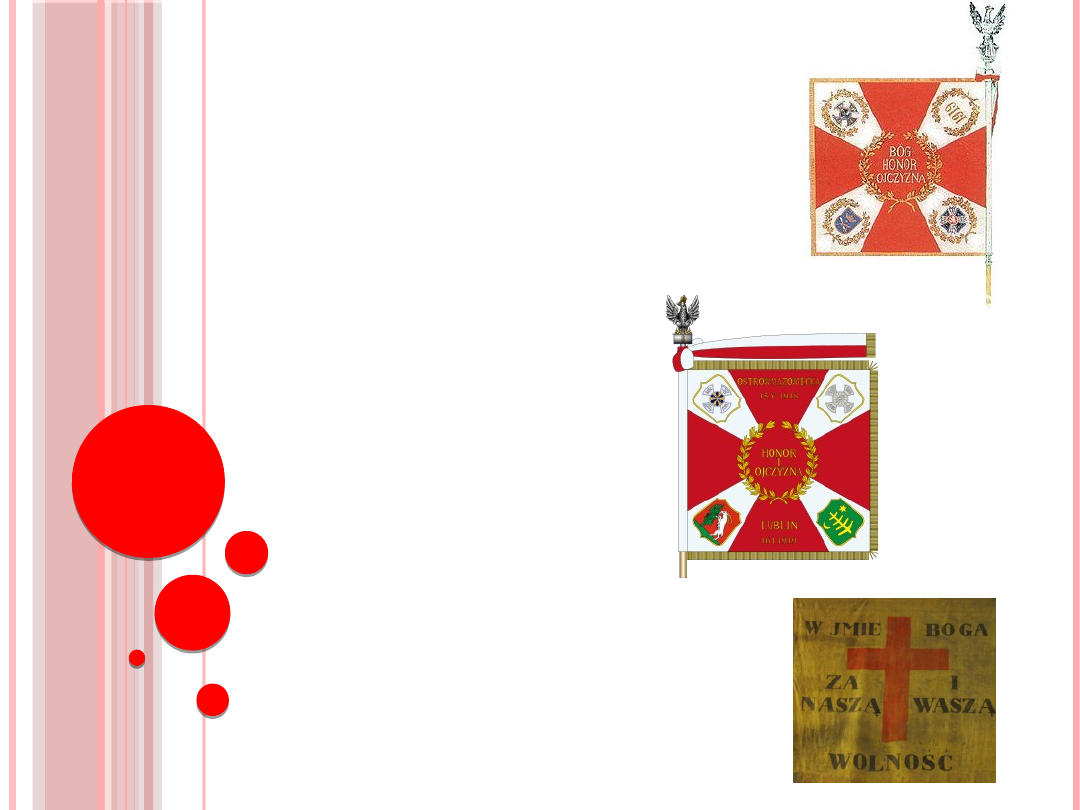
Banner - a sign of the Polish State,
is a symbol of the highest values
of mind and body, of which Poland
needs of their soldiers.
Banner :
Polish currency on the
banners :
1.God, Honor, Fatherland
(motto of the Polish Army)
2.Honor and Country
(motto of the Polish Army)
3. For our freedom and
yours (an abbreviated
version of the inscription on
the flag of the
demonstrations in honor of
the Decembrists in Warsaw,
25 January 1831)
1
2
3
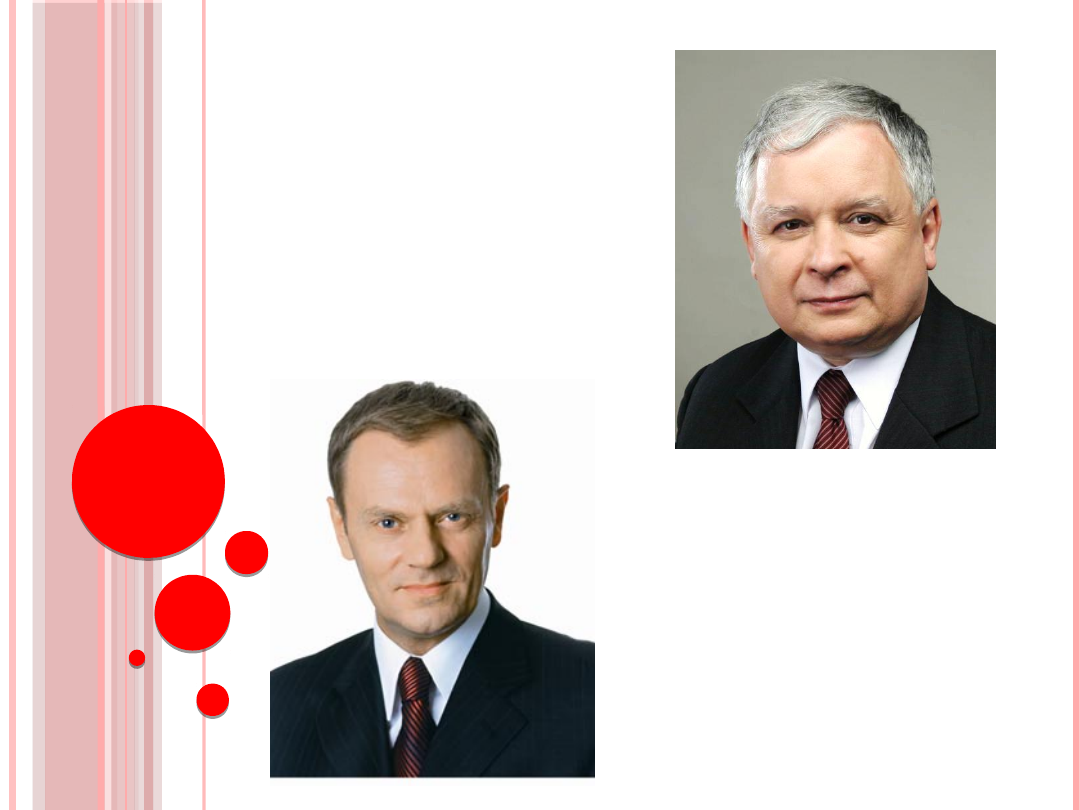
Polish President :
Lech Aleksander Kaczyński
(born June 18, 1949 in
Warsaw) - Polish politician,
since 2005 President of the
Polish Republic.
Polish Prime Minister :
Donald Franciszek Tusk
(born April 22, 1957 in
Gdansk, Poland) - Polish
politician, the historian, the
Prime Minister from 16
November 2007.
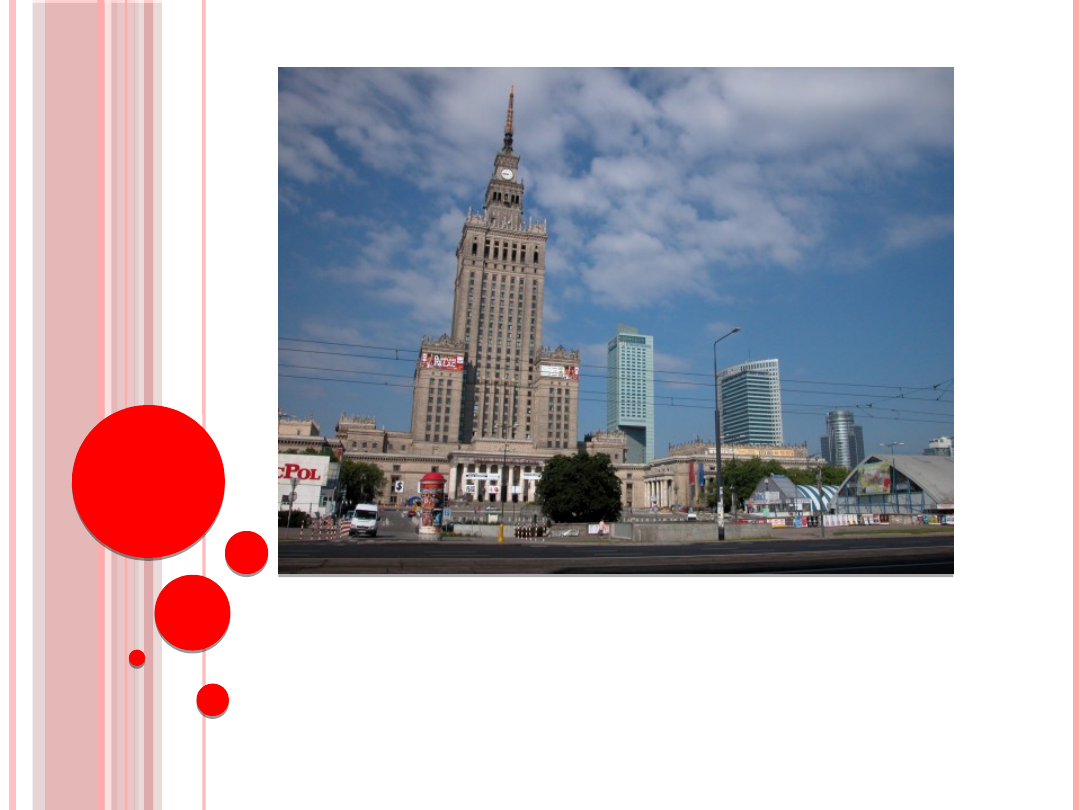
Capital
Polish :
Warsaw -
the capital and largest Polish city, located in
central-eastern part of the country, in the Mazowsze
river Vistula. Warsaw is an important European center
for scientific, cultural, economic, political and Articles. It
includes establishment of parliament (Sejm and
Senate), President of the Republic, the Council of
Ministers and other central authorities.
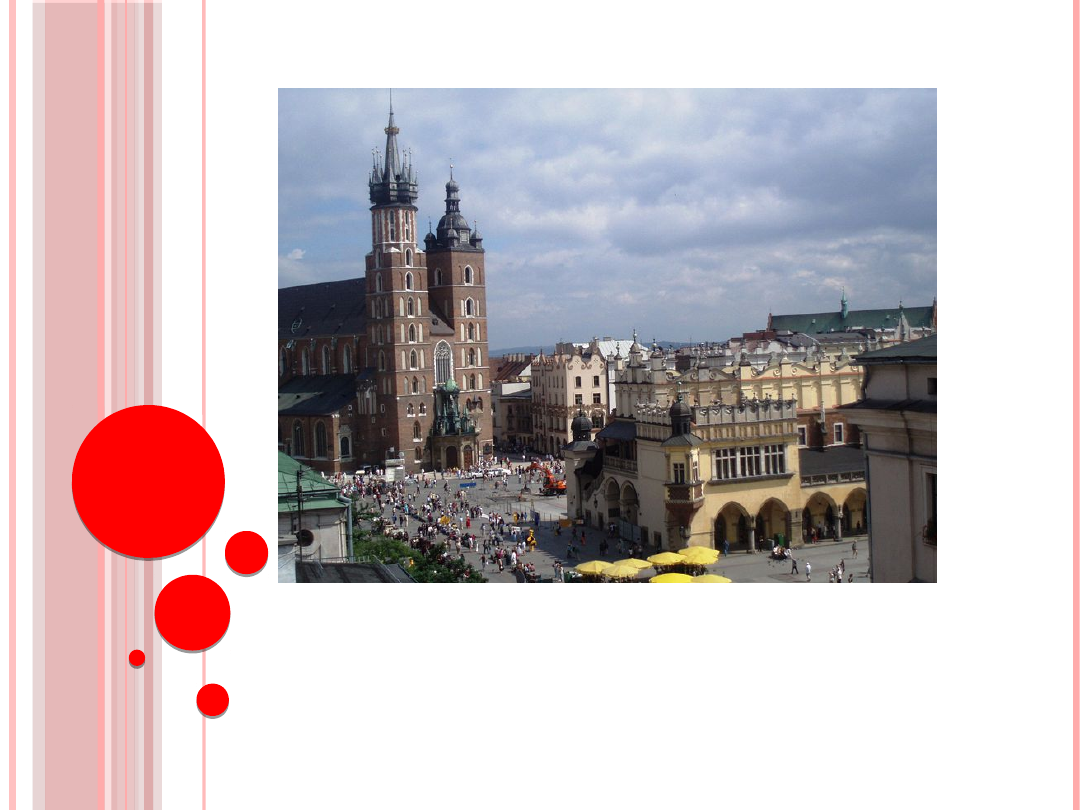
The most popular cities in Poland :
Krakow-
a city situated on the Vistula River in
southern Poland. It is one of the oldest Polish cities, with
over a thousand years of history. In the past, Krakow was
the Polish capital and seat of Polish kings. Krakow has a
valuable architectural monuments, works on many of
the institutions and cultural institutions. This is one of
the most beautiful and most visited cities by tourists in
Poland.
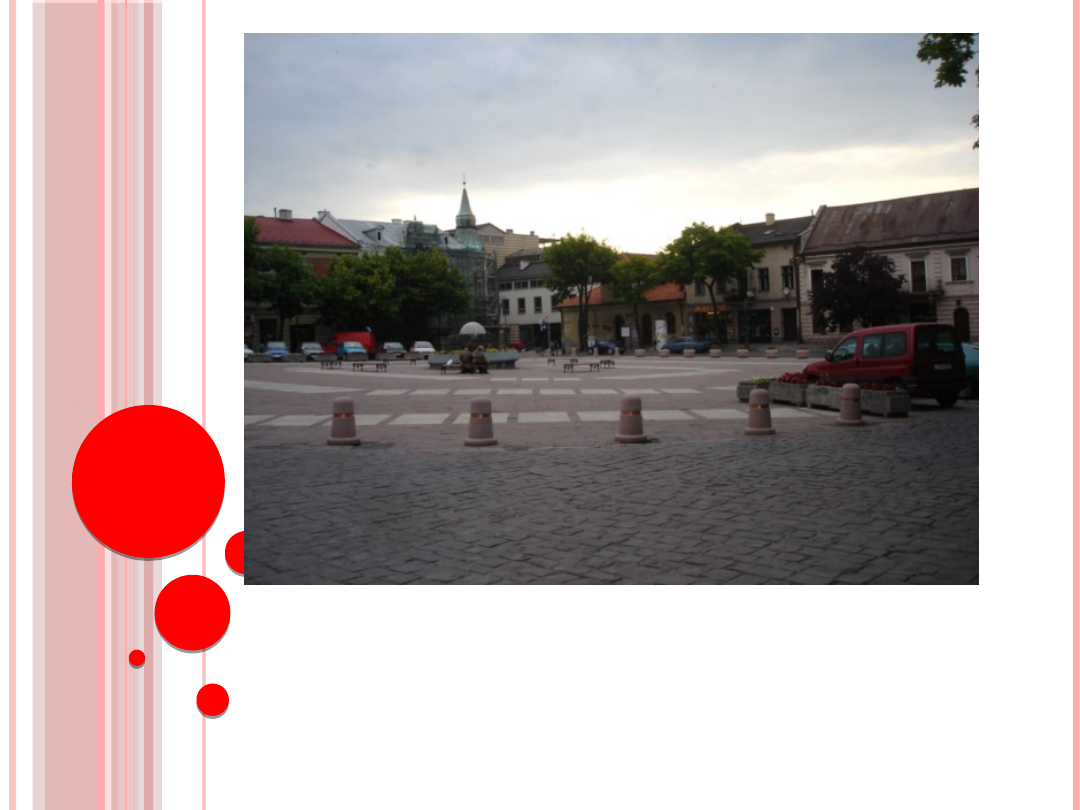
Wieliczka
- the most frequently visited city in addition to
Krakow Malopolska. Mine has the original situation, because
situated in a valley between two ridges of hills Foothills
Wielicki, towing from west to east. Today it is a typical tourist
city (salt mine). Is known for its unique global salt mine,
which is visited by more than 1 million tourists a year.
Salt mine (click)
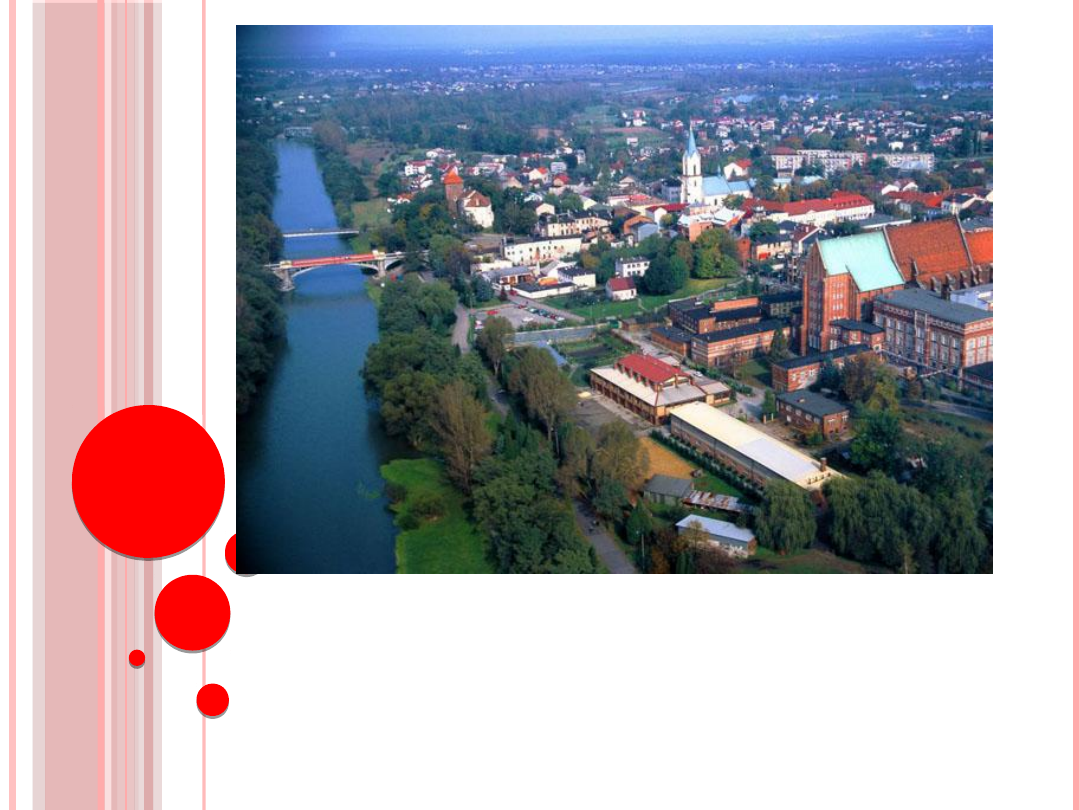
Oświęcim
(Auschwitz in German) - a town in the province
of Małopolska, with an area of 30.3 km2. It has more than
800-year history and one of the oldest castles castellan Piast
dynasty in Poland. Auschwitz is located near the famous
tourist destinations: Krakow, Wieliczka, Wadowice, Kalwaria
Zebrzydowska and Pszczyna. Around the world, ‘Oświęcim' or
'Auschwitz' is associated exclusively with the former
extermination camp.
Auschwitz (click)
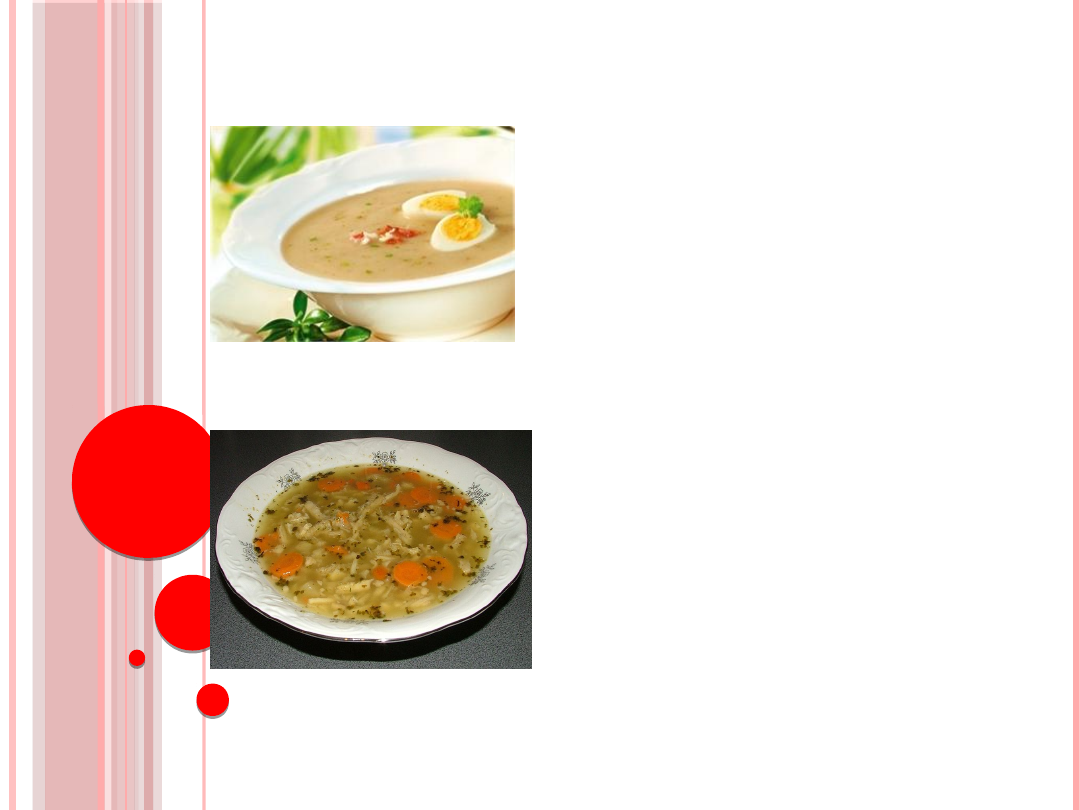
Polish dishes
:
Żurek - Polish traditional sour soup
made of acid sour.
There are variations of the soup - it can
be prepared with mushrooms, with egg
and ham or with sausage . It is also
prepared for the typical Polish Easter
breakfast!
Flaki or Flaczki is a traditional Polish
meat stew. Its name is derived from its
main ingredient: thin, cleaned strips of
beef tripe (in Polish: flaki). The method
of preparation may vary slightly
depending on the region. Common
ingredients include beef tripe, beef,
bay leaf, parsley, carrot, beef broth,
and spices to taste.
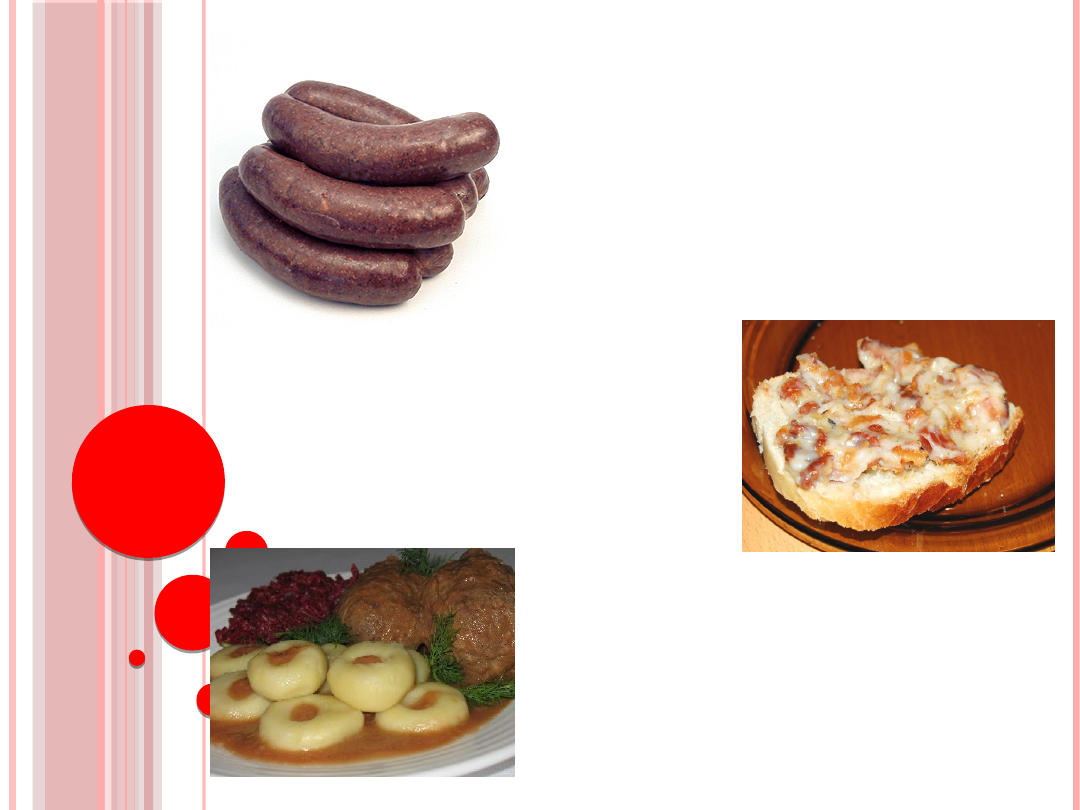
Kaszanka (or kiszka) is a traditional blood
sausage in Polish cuisine, called krupniok in
Silesia. It is made of a mixture of pig's blood
and buckwheat kasza stuffed in a pig
intestine.Kaszanka may be eaten raw, but
traditionally it is either grilled or fried with
some onions and then served with potato
and sauerkraut.
Smalec - prepared with lard or bacon with
the addition of onions, marjoram,
sometimes also with apples or prunes.
Usually served with bread and served with
pickles as an appetizer before the main
course.
Kluski śląskie (śl. gůmiklyjzy) - the type
of potato noodles prepared with boiled
potatoes They are served in addition to
meat dishes with sauce (often the trunk
Silesia). These noodles are a popular dish
in Upper Silesia.
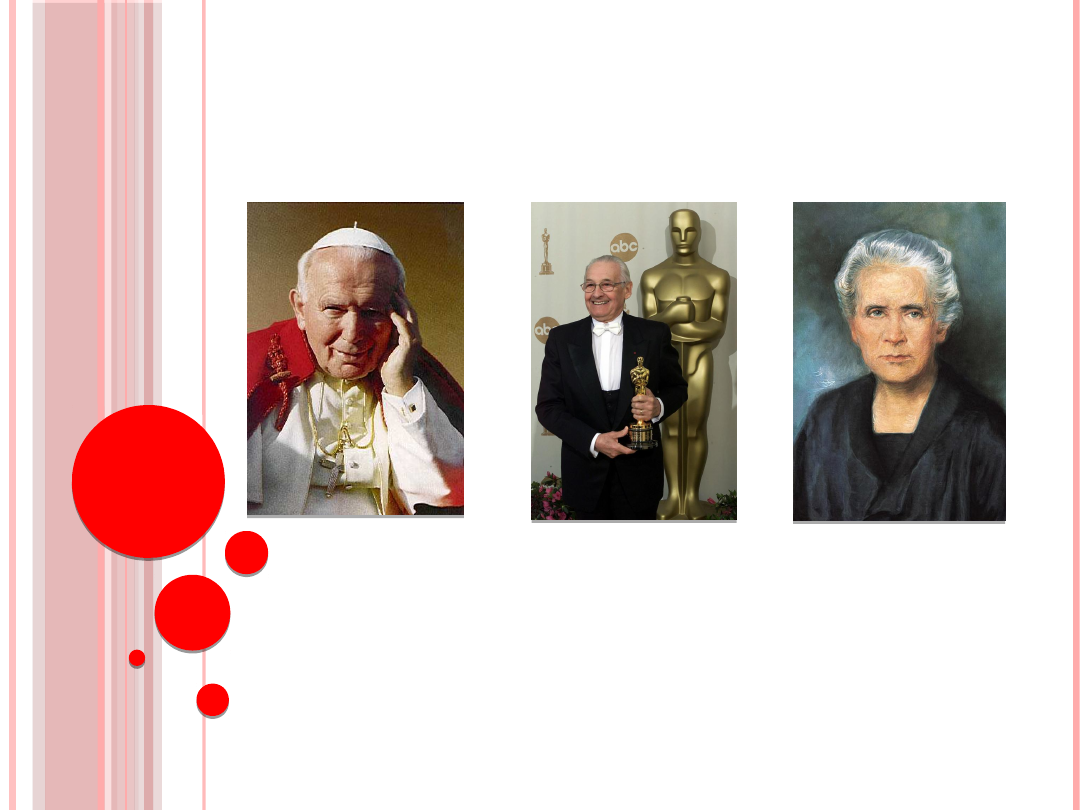
Famous People :
John Paul II
(pope)
Andrzej
Wajda
(director)
Marie
Skłodowska
Curie
(physicist and
chemist )
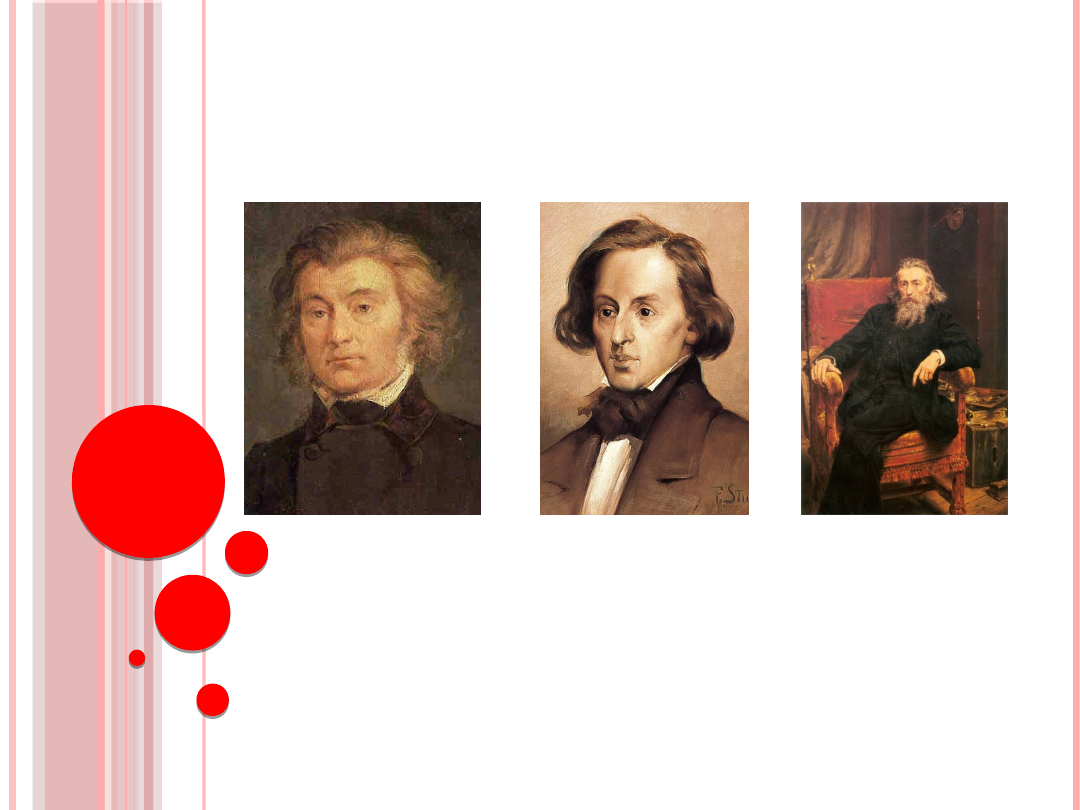
Adam
Mickiewicz
(novelist)
Fryderyk Chopin
(Composer)
Jan Matejko
(painter)
Document Outline
- Slide 1
- Slide 2
- Slide 3
- Slide 4
- Slide 5
- Slide 6
- Slide 7
- Slide 8
- Slide 9
- Slide 10
- Slide 11
- Slide 19
- Slide 20
- Slide 21
- Slide 22
Wyszukiwarka
Podobne podstrony:
symbole polski [po ang]
Polski kodeks karny (wersja ang)
Piekny umysl po czterdziestce wersja dla IIroku STUD
cv po ang, Po I-III rok
Jak można łączyć święto odrodzenia Polski po 123 latach niewoli z katastrofą smoleńską, PRASA, Gazet
Podręcznik zasad udzielania omocy MSP po ang
ZMIANY TERYTORIUM POLSKI PO II WOJNIE ŚWIATOWEJ
Polityka zagraniczna Polski po 1989 roku
Wskazania Episkopatu Polski po ogłoszeniu nowego wydania ogólnego wprowadzenia do Mszału Rzymskiego
Możliwe konsekwencje polityki polskiej po katastrofie w smolensku poczatek rozbioru polski
kurs adobe photoshop po pl wersja multimed na cd opis instr przewodnik po adobe AJLT7MEQRU6AB4ZFOGRC
i idealism po ang
Ustalenie granic polski po I wojnie światowej, i inne
Perspektywy rozwoju polskiego rynku biopaliw wersja finalnau
Oswiecenie 9, Mazurek Dąbrowskiego - zapowiedź nurtu niepodległościowego w literaturze polskiej po t
REFERATY, Mieszko II i kryzys Państwa Polskiego po 1031 roku, Mieszko II i kryzys Państwa Polskiego
wyklad 4c Struktura spoleczna Polski po transformacji
więcej podobnych podstron